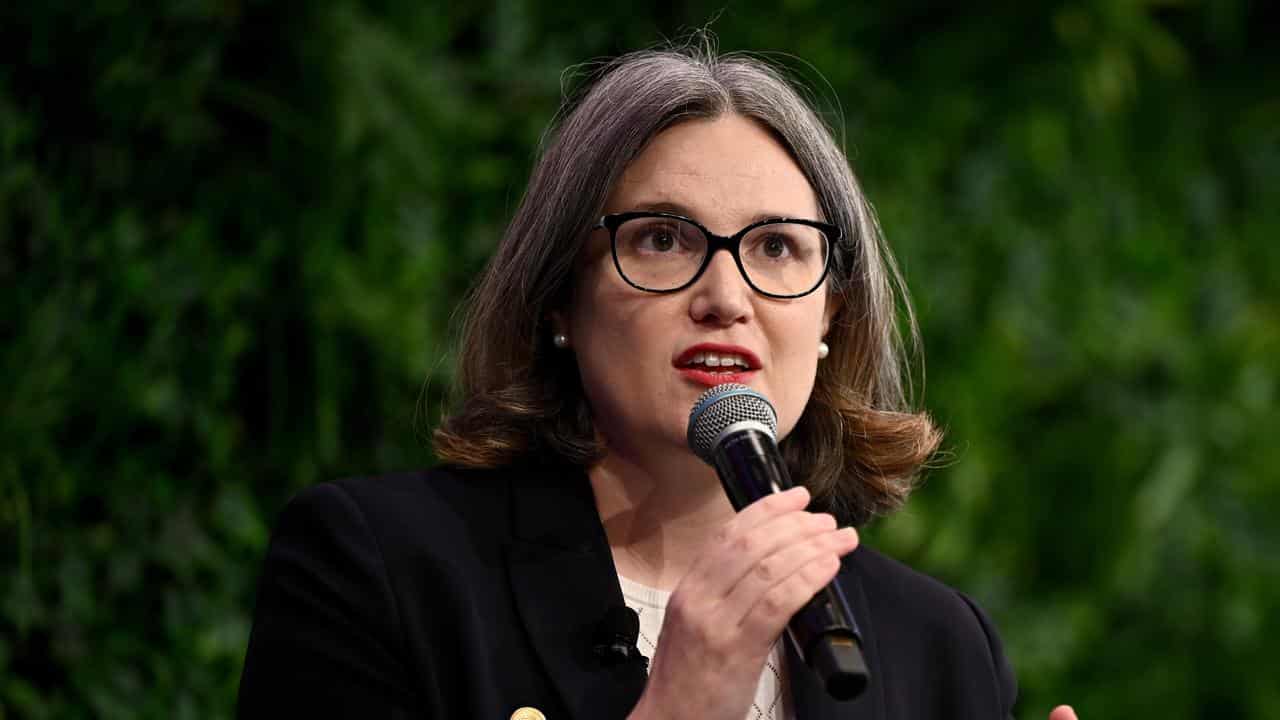
Online marketplaces such as Amazon are increasingly competing with the major supermarkets, Coles chief executive Leah Weckert says.
Market concentration in the supermarket sector has Australia's two biggest players fending off criticisms that they are using their market power to charge consumers high prices and squeeze suppliers.
Ms Weckert told the Australian Financial Review's Business Summit supermarkets were not just competing with one another but also with hardware stores, pharmacies and online retailers.
"You could have shopped for a whole heap of the products that we sell in our stores at Amazon," she said.

While declining to comment specifically on lower cost competitors such as Temu, Ms Weckert said consumers were willing to shop around meaning the organisation was constantly having to "up our game".
"It is a very competitive market," she said.
"It has gotten way more competitive in the last 10 years and to your point, there are always new entrants, particularly online entrants, that are coming in that are increasingly making it competitive."
Several government and parliamentary inquiries have been launched into the supermarket sector to investigate pricing mechanisms and other aspects of the business model.
The Australian business sector has proved resilient in the face of successive economic challenges and the latest National Australia Bank surveying suggests conditions are back above their long-run averages.
The indicator dropped below the long run average for the first time in January but has since crept back above that level.
Despite the better result in February, up three points over the month, NAB chief economist Alan Oster said it was too early to say if this was "just a temporary lift or the beginning of a more meaningful turnaround".
“The story at an industry level is really quite mixed with some sectors still very strong and others under a lot of pressure,” Mr Oster said.
He said transport, recreation and personal services and finance, business and property were solid but on the other hand, retail and construction were weak to reflect higher interest rates.
Cost pressures were also plaguing businesses, which Mr Oster said suggested progress on inflation was unlikely to be linear.
“While we do expect inflation to return to the RBA’s target band in 2025, plenty of risks remain that could throw us off that course," he said.
"That is why we expect the RBA to take a cautious approach with rates to be on hold for most of this year.”
Also speaking at the business conference, former coalition treasurer Josh Frydenberg said he was a "glass half full" on the state of the Australian economy.
"I see inflation trending down, unemployment at 4.1 per cent - it's a bit higher than when we left government, but it's well below the 5.1 per cent before entering into COVID in February - and we will maintain that triple A credit rating," he said on Tuesday.
"The government's going to deliver a second budget surplus off the back of strong commodity prices, and importantly, our debt-to-GDP ratio is just over 20 per cent, which is effectively the envy of the world.
"So when I look at all of that, I think the fundamentals are sound."









